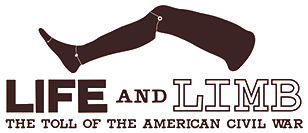
Class 6: Narratives of Reconstruction: Men, Museums and the Meaning of the Civil War
Introduction:
This final class is designed to draw together the themes covered in the previous five, and provide an overview of the many and varied responses of and to the wounded Civil War veteran. It looks in particular at the post-war ‘image’ of the wounded Civil War veteran and at his role in the reconstruction of the nation after 1865. R. B. Rosenberg, author of an influential monograph on Confederate Soldiers’ Homes, considers the cultural appropriations of the disabled veteran in the South, and Frances Clarke analyzes how one group of Union veterans interpreted the loss of a limb as a symbolic sacrifice in a national cause. Lisa Herschbach’s develops the link, first explored by Oliver Wendell Holmes, between the disabled veteran and modernity, while Susan-Mary Grant explores the ways in which, ultimately, the avoidance of the realities of both disability and race effected a more robust reconstruction of the nation. Finally, two articles co-authored by Michael Rhode with Robert Goler and J.T.H. Connor respectively, point students toward a new approach to the subject of disabled veterans, Civil War history, and an understanding of the impact of warfare on individual soldiers and their societies in the nineteenth century and since.
Students should consider the material in “Rebuilding the Body” in Honorable Scars and Sacrifices Forgotten from the exhibition together with the readings below.
Readings:
Clarke, Frances. “Honorable Scars”: Northern Amputees and the Meaning of Civil War Injuries.” In Union Soldiers and the Northern Home Front: Wartime Experiences and Postwar Adjustments. Edited by Paul A. Cimbala and Randall M. Miller. New York: Fordham University Press, 2002, 361-394.
Connor, J. T. H. and Michael Rhode. “Shooting Soldiers: Civil War Medical Images, Memory, and Identity in America.” In Invisible Culture, An Electronic Journal for Visual Culture 5 (2003). Available online at http://www.rochester.edu/in_visible_culture/Issue_5/ConnorRhode/ConnorRhode.html (accessed 3/1/2011).
Grant, Susan-Mary. “Reconstructing the National Body: Masculinity, Disability and Race in the American Civil War.” In Proceedings of the British Academy 154 (2008): 273-317.
Goler, Robert I. and Michael G. Rhode. “From Individual Trauma to National Policy: Tracking the Uses of Civil War Veteran Medical Records.” In David A. Gerber (ed.), Disabled Veterans in History. Ann Arbor: The University of Michigan Press, 2000, 163-184.
Herschbach, Lisa. “Prosthetic Reconstructions: Making the Industry, Re-making the Body, Modelling the Nation.” History Workshop Journal 44 (1997): 23-57.
Rosenberg, R. B. “Empty Sleeves and Wooden Pegs”: Disabled Confederate Veterans in Image and Reality.” In Disabled Veterans in History. Edited by David A. Gerber. Ann Arbor: The University of Michigan Press, 2000, 204-223.
Discussion Questions:
- What broader cultural, religious and social imperatives informed the popular imagery of the Confederate veteran and the personal responses of those Union veterans that Frances Clarke (see Life Without a Limb) [link to the exhibition page] has studied in the post-war period?
- To what extent did the image of the prosthetically ‘enhanced’ veteran fulfil Oliver Wendell Holmes’s expectations of the impact of the Civil War (see Class 1 reading)?
- In what way does direct medical evidence from the Civil War either challenge or inform our understanding of the significance of that conflict for American nationalism and our approach to the wounded of 21st century conflict?


